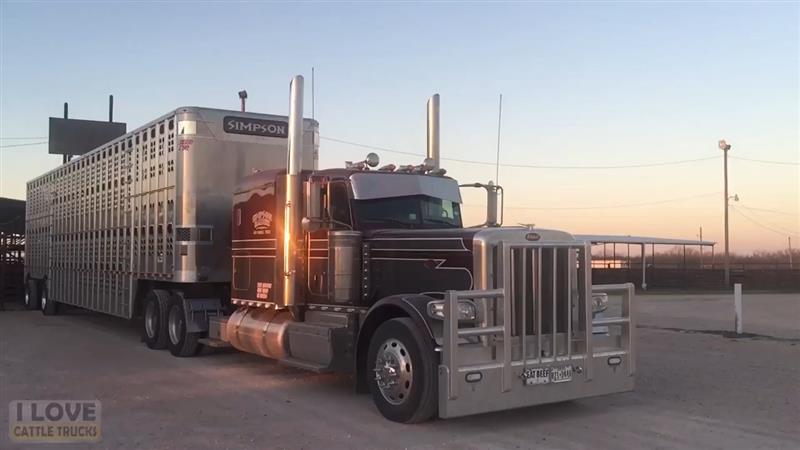Electronic logging devices (ELD) have yet to be fully implemented by livestock haulers, but their time could be coming soon. Most commercial truckers have been using ELDs for nearly two months as part of the MAP-21 mandate enforced by the Department of Transportation’s (DOT) Federal Motor Carrier Safety Administration (FMCSA).
During the Live Cattle Marketing Committee held by the National Cattlemen’s Beef Association, an update was given on the ELD in Phoenix on Feb. 2. An ELD monitors drive time for truckers and eliminates the need for log books. The industry has many questions about ELDs and how it impact hours of service, says Bill Mahorney, enforcement division chief for FMCSA.
The rules went into effect on Dec. 18, 2017, for most commercial truckers. A 90-day delay was imposed by FMCSA on the same date for livestock transporters to participate in a comment period for the agency to better evaluate issues with the mandate. Livestock haulers will need ELDs starting March 18 if they plan to do long hauls and the comment period has been extended to Feb. 20.
“If anyone tells you the hours of service change is a result of this (ELD rules) don’t believe them,” Mahorney says. “The hours of service regulation are the same as they were before. The electronic logging device only monitors what the actual hours of service on your vehicle is.”
Truckers have an hours of service limit of 11 hours of driving in a 24 hour period. Drivers can be on-duty a total of 14 hours consecutively, including the 11 hours of drive time. After 11 hours are reached, drivers must rest and be off-duty for 10 consecutive hours. Exemptions are in place for agriculture hauls within a 150 mile radius and for drivers who only drive eight days in a 30 day period.
Prior to the ELD drivers filled out paper logs. Using paper logs offered some flexibility where truckers might change the hours of service when needed. This was against the law, but was difficult to enforce. With an ELD there is no way to adjust the hours of service should something unforeseen happen during a haul.
In Mahorney’s role his goal is to ensure that rules, like the ELD, are enforced in a uniform manner across the country. However, he wants to work with livestock haulers and producers to find a solution to implementing the ELD with hours of service.
Cattlemen Concerned
A number of cattlemen in attendance at the committee meeting expressed concern to Mahorney of how enforcement of hours of service with ELDs could impact their operations.
Miles City, MT, rancher Fred Wacker questioned how inclement weather could impact the hours of service for a driver. Under the hours of service a trucker can get a few additional hours to drive when weather like ice extends the drive time.
“A couple hours may not be enough. You’ve got live animals on board. They need feed, they need water,” Wacker says. “I think there needs to be more flexibility.”
Wacker expressed interest in how using a team of drivers would work, too. If using a team of drivers with one driving and the other riding as a passenger, the hours of service would not apply to the passenger until they start driving and enter their unique identifier.
A point of interest that came to light for many in attendance was an exemption for hours of service that applies to the movie industry.
“Yes, the movie industry does have a limited exemption for hours of service,” Mahorney says.
“Why are they (movies) more important than hauling food?” Wacker asked. The question was met with a round of applause.
Mahorney expressed that livestock producers and haulers need to make comments to express their concerns and a petition for the hours of service could be made with enough interest.
Animal health and welfare has been a worry for Clint Berry, a rancher from Gainesville, MO.
“Unlike a load of steel, coal or electronics, we need some flexibility for the care of those animals,” Berry says.
Transporting cattle to the feedlot regions of the U.S. from cow-calf areas like the Southeast and West is difficult to do in the 11 hour period of drive time.
“We will have dead cattle on the side of the highway,” Berry cautions if flexible hours of service are not added because drivers would need to park for extended periods of time.
One option to prevent a catastrophe like this from happening is to unload the cattle, but that opens up other issues.
Berry says there are two major problems with the proposal to unload cattle at pens midway through a haul to rest: those facilities don’t exist and biosecurity.
“All of those things drive up the cost on our cattle,” Berry says. “As you enforce these rules those cattle that lie outside of that barrier (11 hours from feedlots) are going to have an incredible price deduction put on them. Buyers cannot simply bid on cattle that are 17 hours away.”
Mahorney says these types of comments are why the 90 day extension was placed on ELD implementation for livestock haulers.
“Facts will get you a long way when you are dealing with a petition,” Mahorney says. “If you don’t petition you won’t get anything.”
Commenting
Comments can be made going to the 90 day waiver published on the Federal Register website or directly by going to Regulations.gov.
Livestock groups like NCBA, the U.S. Cattlemen's Association and the National Pork Producers Council have also been submitting comments on behalf of their members.
Source: Drovers




